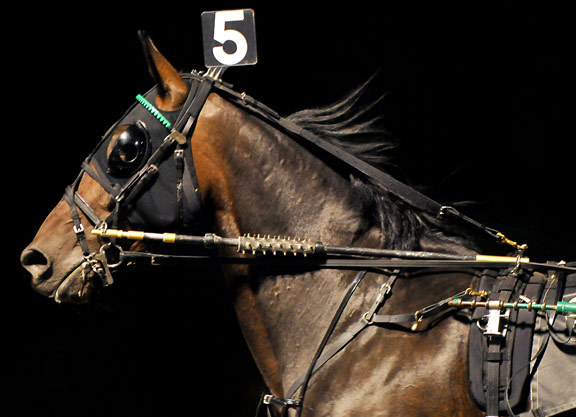By Bill Finley
When the United States Trotting Association (USTA), the breed registry for standardbred racing in the U.S., proposed in 2006 limiting the number of mares a stallion could be bred to, Russell Williams, who then was a member of the USTA Board, prepared for an impending storm. He knew some breeders would be unhappy and there would likely be lawsuits looking to overturn the rule. But Williams, who is also an attorney, never wavered, confident that, in the end, the legal system would side with the USTA.
He was right. The USTA's plan to limit a stallion's book to 140 mares went into effect with sires debuting in 2009 or later. Williams, now the president of the USTA, said that legal efforts to overturn the new rule “went nowhere.”
With that in mind, Williams said he believes The Jockey Club will come out on the winning end of a dispute that now looks like it is headed to court. On Tuesday, it was announced that Spendthrift Farm, Three Chimneys Farm and Ashford Stud have brought suit against The Jockey Club over its attempt to limit the books of any stallion born in 2020 or later. The Jockey Club is also seeking to cap the number of mares a stallion can be bred to at 140. The litigants have said that The Jockey Club's decision is a “blatant abuse of power.”
“My advice to The Jockey Club would be to stay the course and do what is in the best interests of the breed,” Williams said. “I think that when it's all said and done, they will be fine.”
Williams is also the president of Hanover Shoe Farms, by far the leading breeder in the sport of harness racing. Hanover had more to lose under the new rule than any other entity for the support, but Williams was among those leading the call for change. At the time, a handful of stallions were dominating the breeding industry and Williams was among those who felt the lack of diversity in the gene pool was affecting the overall health of the breed.
“We had to put the best interests of the breed ahead of the temporary financial interests of Hanover,” he said. “We've been here for 95 years and I'd like for us to be here for another 95 years.”
Not everyone saw it that way. Williams said antitrust lawsuits were filed alleging restraint of trade by the USTA and that he was among those deposed. He said that once the depositions began, it became clear that the plaintiffs had no case against the USTA, and the lawsuits were dropped. This came after the USTA consulted with lawyers who told Williams and others that the new regulations did not violate any antitrust laws.
Williams says that the USTA's position then was that the stallion cap was not done for commercial reasons but rather for scientific reasons that would benefit the industry. Under that premise, Williams said, the courts had no basis for striking down limits on breeding.
The 140-mare cap in harness racing came after the USTA commissioned a study by Dr. Gus Cothran of the University of Kentucky. Cothran concluded that the standardbred gene pool was becoming less diverse, and that the breed would suffer in the future because of that lack of diversity.
Alan Leavitt, the president of Walnut Hall Ltd., a standardbred breeding operation in Lexington, said that Cothran's study went a long way toward proving the USTA's point, that the science made it clear that the breed would continue to be negatively impacted if some limits to the book sizes were not implemented. The Jockey Club has never circulated a similar study, which, Leavitt said, could be a major factor in how the case proceeds.
“The Jockey Club is totally vulnerable and the USTA wasn't,” Leavitt said. “The USTA relied on an analysis that was made of the American trotter. The study demonstrated that the American trotter had lost 17% of its heterozygosity, which is the variability factor. A loss to that extent first manifests in the infertility or lower infertility in stallions. You could see it at that time. Our trotting sires were less fertile than they had been and it was on that basis that the USTA imposed the 140 limit.”
Leavitt said that the absence of such a study in Thoroughbreds will have a bearing on how the suit lodged by the Thoroughbred farms proceeds. The plaintiffs in the Thoroughbred case contend that the stallion cap “serves no legitimate purpose and has no scientific basis.”
“I would think that Spendthrift and those other two farms are going to tear The Jockey Club to pieces if they come after them with the right arguments,” he said.
Since the new rules went into effect in standardbred racing, the controversy has died down and the 140 number has gained widespread acceptance.
“I think The Jockey Club is doing the right thing,” said Myron Bell, a standardbred owner and bloodstock advisor. “This will give more stallions a chance. Too much of a good thing is no good. I think the Thoroughbreds were overdue in doing this. I know that the three farms who have sued have many stallions, but I think less is better. It will be interesting to see what happens with this lawsuit.”
Not a subscriber? Click here to sign up for the daily PDF or alerts.






